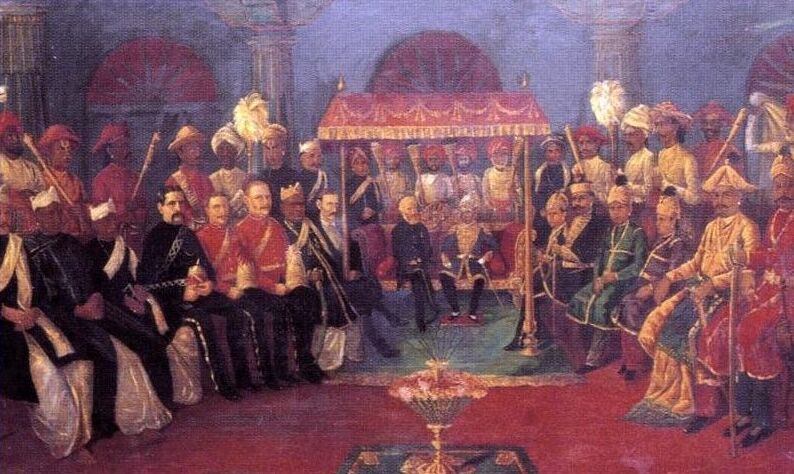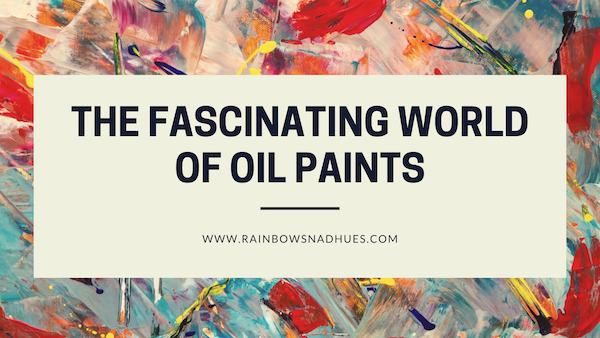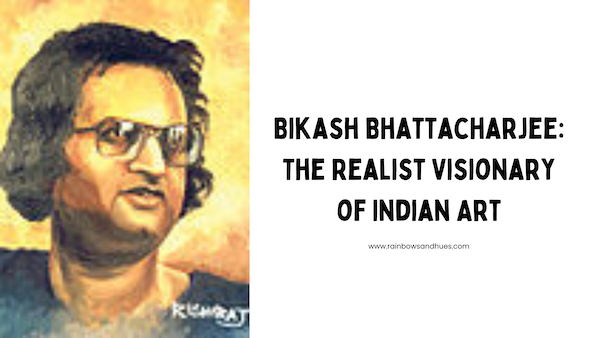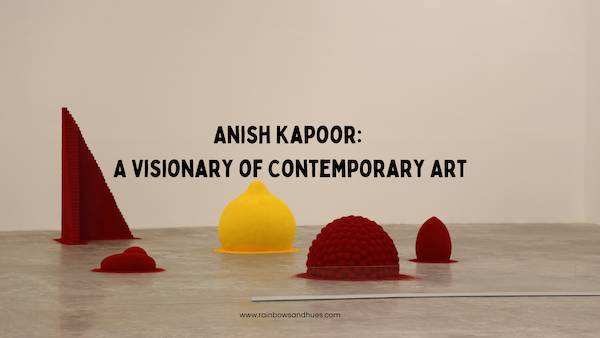Oil paints have a long and storied history that spans several centuries and continents. Known for their rich texture, vibrant colors, and versatility, oil paints have played a significant role in the development of Western art. From their early beginnings in the medieval period to their continued use in contemporary art, oil paints have undergone significant changes in terms of composition, technique, and cultural significance. This article explores the history and evolution of oil paints, highlighting key developments, influential artists, and the role oil paints have played in shaping art history.
Origins of Oil Paints
The exact origin of oil painting is somewhat murky, with evidence suggesting that oil-based paints were used as early as the 5th century CE. However, it wasn’t until the 15th century that oil paints gained widespread popularity in Europe. Before the advent of oil paints, artists primarily used tempera, a fast-drying medium made from pigment mixed with egg yolk. While tempera allowed for detailed work, it lacked the depth and luminosity that oil paints would later provide.
Also Read: Pattachitra: A Window into Ancient Indian Folk Art
Early Use and Development
One of the earliest recorded uses of oil paints dates back to the medieval period, particularly in Afghanistan’s Bamiyan caves. The murals in these caves, painted around the 7th century CE, were created using a mixture of oil and natural pigments. However, these early examples were relatively isolated, and it wasn’t until the Renaissance that oil paints became the dominant medium in European art.
The Renaissance and the Rise of Oil Paints
The Renaissance period (14th to 17th century) marked a significant turning point in the history of oil paints. The invention and refinement of oil painting techniques are often credited to the Northern European painters, particularly the Flemish artist Jan van Eyck (1390-1441). While van Eyck did not invent oil painting, he is widely regarded as one of the first artists to master the medium, developing techniques that allowed for greater realism and depth in his work.
Also Read: Alcohol Ink Art: An Exhaustive Guide
Van Eyck’s innovations included the use of thin layers of translucent oil paint, known as glazes, which he applied over a monochrome underpainting. This technique allowed him to create the luminous, detailed effects seen in his famous works such as the “Arnolfini Portrait” and the “Ghent Altarpiece.” The success of van Eyck’s work led to the widespread adoption of oil paints by artists across Europe.
During the Renaissance, the use of oil paints spread to Italy, where artists such as Leonardo da Vinci, Michelangelo, and Titian began experimenting with the medium. Oil paints allowed these artists to achieve a level of realism and depth that was previously unattainable with tempera. Leonardo’s “Mona Lisa” and Titian’s “Venus of Urbino” are prime examples of the richness and subtlety that oil paints can achieve.
The Baroque Period and Beyond
The Baroque period (17th century) saw further advancements in oil painting techniques, particularly in the use of chiaroscuro, the contrast between light and dark. Artists like Caravaggio and Rembrandt van Rijn used oil paints to create dramatic, realistic effects that emphasized the emotional intensity of their subjects.
Rembrandt, in particular, is celebrated for his mastery of oil paints, using them to create richly textured surfaces and subtle gradations of light. His works, such as “The Night Watch” and “Self-Portrait with Two Circles,” showcase his ability to manipulate oil paints to achieve both fine detail and expressive brushwork.
During the 18th and 19th centuries, oil painting continued to evolve, with artists exploring new themes, techniques, and styles. The Romantic period saw the rise of landscape painting, with artists like J.M.W. Turner and John Constable using oil paints to capture the beauty and power of nature. Turner’s use of thick, impasto layers of oil paint created atmospheric effects that influenced later movements, such as Impressionism.
Also Read: The Evolution of Pens: A Comprehensive History
The Impressionist Revolution
The late 19th century witnessed a significant shift in the use of oil paints with the emergence of the Impressionist movement. Artists like Claude Monet, Pierre-Auguste Renoir, and Edgar Degas broke away from traditional methods, focusing on capturing the effects of light and color rather than precise detail. They often painted en plein air (outdoors), using oil paints directly from the tube to apply quick, loose brushstrokes.
Monet’s series of paintings, including “Water Lilies” and “Haystacks,” are iconic examples of how oil paints were used to capture fleeting moments in nature. The Impressionists’ innovative techniques, such as broken color and the use of complementary colors, opened up new possibilities for oil painting and influenced subsequent art movements, including Post-Impressionism and Modernism.
The 20th Century and Modern Oil Painting
The 20th century brought further experimentation with oil paints, as artists began to explore abstraction, surrealism, and expressionism. The versatility of oil paints made them ideal for a wide range of styles, from the bold, geometric compositions of Pablo Picasso to the emotive, impassioned works of Vincent van Gogh.
Van Gogh’s use of oil paints is particularly noteworthy for its expressive power. His thick, swirling brushstrokes, as seen in “Starry Night” and “Sunflowers,” conveyed intense emotion and energy, pushing the boundaries of traditional oil painting.
As the century progressed, artists like Jackson Pollock and Willem de Kooning took oil painting in new directions, experimenting with gestural abstraction and the physicality of paint itself. Pollock’s “drip” paintings, created by pouring and splattering oil paints onto large canvases, emphasized the act of painting as a form of expression.
Also Read: Different Types of Canvas Used by Painters and Artists
How Oil Paints Are Made
Understanding how oil paints are made can provide insight into why they have been such a favored medium for centuries. Oil paints are created by grinding pigments into a binder, typically linseed oil. The quality of the oil and pigment, as well as the method of grinding, affects the paint’s consistency, drying time, and color intensity.
Historically, artists prepared their oil paints, carefully selecting and grinding pigments to achieve the desired color and texture. Today, oil paints are manufactured in a variety of grades, from student to professional quality, with a wide range of colors available. Some artists still prefer to make their paints, particularly when seeking specific hues or effects.
Famous Western Artists Who Mastered Oil Paints

Throughout history, many artists have left an indelible mark on the world of art using oil paints. Some of the most famous include:
- Leonardo da Vinci: One of the most iconic figures of the Renaissance, Leonardo da Vinci used oil paints to create some of the most renowned artworks in history, including the “Mona Lisa” and “The Last Supper.” His meticulous technique and attention to detail were enhanced by the flexibility of oil paints.
- Rembrandt van Rijn: The Dutch master Rembrandt is celebrated for his use of chiaroscuro, the contrast between light and dark, which he achieved through oil paints. His works, such as “The Night Watch” and “Self-Portrait with Two Circles,” showcase the depth and realism that can be achieved with oil.
- Vincent van Gogh: Known for his expressive brushwork and vibrant color palette, van Gogh’s oil paintings, including “Starry Night” and “Sunflowers,” are some of the most recognized in the world. He used thick layers of oil paint, known as impasto, to create texture and movement in his works.
- Claude Monet: As a founder of French Impressionism, Monet used oil paints to capture the fleeting effects of light and color in his landscapes. His series of paintings, like “Water Lilies” and “Impression, Sunrise,” exemplify the use of oil paints to create atmosphere and mood.
- Salvador Dalí: The Spanish surrealist painter Salvador Dalí utilized oil paints to bring his fantastical visions to life. His precise and realistic painting technique, seen in works like “The Persistence of Memory,” highlights the versatility of oil as a medium.
Unknown Facts About Oil Paints
While oil paints are well-known, there are several fascinating facts about this medium that may surprise you:
- Drying Time: One of the unique properties of oil paints is their long drying time. Depending on the thickness of the paint and environmental conditions, oil paints can take days, weeks, or even years to fully dry. This allows artists to work on a painting over an extended period, making adjustments and layering colors without rushing.
- Toxicity: Historically, many oil paints contained toxic substances, such as lead-based white and cadmium pigments. While these provided vibrant colors, they were hazardous to the health of artists. Today, safer alternatives are available, but some traditionalists still use the original pigments for their unique qualities.
- Linseed Oil: The most common oil used in oil paints is linseed oil, derived from the seeds of the flax plant. Linseed oil is preferred because it dries relatively quickly compared to other oils and provides a durable finish. However, artists also use other oils, such as walnut, poppy seed, and safflower oil, depending on the desired effect.
Global Influence of Oil Paints
Oil paints have had a profound influence on art across the globe. From the Renaissance in Europe to modern art movements in America, oil paints have been at the forefront of artistic innovation.
In Europe, oil paints allowed Renaissance artists to achieve unprecedented realism and detail in their work. This technique spread across the continent, influencing artists in Italy, France, Spain, and beyond. The Baroque period, in particular, saw the rise of dramatic compositions and rich color palettes, made possible by the versatility of oil paints.
In the 19th and 20th centuries, oil paints played a crucial role in the development of new artistic movements. The Impressionists, based in France, used oil paints to capture the effects of light and atmosphere in their outdoor scenes. Later, the Surrealists and Abstract Expressionists in America, like Jackson Pollock and Willem de Kooning, used oil paints to explore new forms of expression and abstraction.
Famous Indian Artists Who Mastered Oil Paints
India has a rich tradition of art, and many Indian artists have gained international recognition for their mastery of oil painting. These artists have not only contributed to the evolution of Indian art but have also made a significant impact on the global art scene. Here’s a look at some of the most famous Indian artists known for their oil paintings:

1. Raja Ravi Varma (1848-1906)
Raja Ravi Varma is one of the most celebrated Indian artists, often referred to as the father of modern Indian art. He is renowned for his ability to blend Indian subjects with European techniques, particularly oil painting. Varma’s works are known for their realistic portrayal of Indian mythology, deities, and scenes from classical literature.
His most famous paintings include depictions of Hindu gods and goddesses, such as “Shakuntala,” “Hamsa Damayanti,” and “Saraswati.” Varma’s use of oil paints allowed him to achieve a level of detail and realism that was unprecedented in Indian art at the time. His work had a lasting influence on Indian art and continues to inspire contemporary artists.
2. Amrita Sher-Gil (1913-1941)
Amrita Sher-Gil is often hailed as one of the pioneers of modern Indian art. Born to a Hungarian mother and an Indian father, Sher-Gil’s exposure to European art styles, combined with her Indian heritage, led to a unique artistic style that blended the East and West.
Her oil paintings are known for their bold use of color and form, often depicting the lives of Indian women and rural scenes with a deep sense of empathy and realism. Some of her most famous works include “Three Girls,” “Bride’s Toilet,” and “The Village Scene.” Sher-Gil’s ability to capture the essence of Indian life through her oil paintings has earned her a place among the most significant artists of the 20th century.
3. M. F. Husain (1915-2011)
Maqbool Fida Husain, commonly known as M. F. Husain, is one of the most prominent figures in Indian contemporary art. Often referred to as the “Picasso of India,” Husain’s work is characterized by its modernist approach, often using vibrant colors, bold lines, and a mix of traditional and contemporary themes.
Although Husain is known for working in various mediums, his oil paintings are particularly notable for their dynamic compositions and cultural commentary. His series of paintings on the epics of Mahabharata and Ramayana, as well as depictions of Indian deities and cultural icons, have been celebrated both in India and abroad. Despite facing controversies over his portrayal of religious themes, Husain remains one of India’s most influential artists.
4. Jatin Das (1941-Present)
Jatin Das is a contemporary Indian artist known for his expressive and dynamic oil paintings. His work often explores the human condition, emotions, and relationships, with a focus on movement and energy. Das’s style is marked by the use of bold brushstrokes, intense colors, and a deep understanding of human anatomy and expression.
Over his long career, Jatin Das has created an extensive body of work, including portraits, figures, and abstract compositions. Some of his well-known paintings include “Flying Apsara,” “Musicians,” and “Man and Woman.” His contributions to Indian art have been widely recognized, and he continues to be a significant figure in the contemporary art scene.
5. Tyeb Mehta (1925-2009)
Tyeb Mehta was an Indian painter and sculptor who played a crucial role in the development of modern Indian art. Known for his minimalist approach and powerful imagery, Mehta’s oil paintings often dealt with themes of suffering, violence, and existential angst.
His iconic works, such as “Mahishasura,” “Kali,” and “The Falling Figure,” are characterized by their stark compositions and symbolic use of color. Mehta’s paintings have fetched record prices at international auctions, reflecting his status as one of India’s most influential modern artists. His contribution to Indian art is not only in his unique style but also in his exploration of the human condition through his oil paintings.
6. S. H. Raza (1922-2016)
Syed Haider Raza, commonly known as S. H. Raza, was a founding member of the Bombay Progressive Artists’ Group, which sought to break away from traditional Indian art forms and embrace modernism. Raza’s work is characterized by its abstract forms, vibrant colors, and spiritual themes, often inspired by Indian philosophy and cosmology.
Raza’s oil paintings, such as “Bindu,” “La Terre,” and “Saurashtra,” are deeply rooted in Indian culture while also reflecting his exposure to Western modernism. The “Bindu,” a central motif in his later works, symbolizes the point of creation and has become synonymous with Raza’s artistic identity. His work has been exhibited and celebrated globally, making him one of the most significant Indian artists of the 20th century.
7. F. N. Souza (1924-2002)
Francis Newton Souza was another key figure in the Bombay Progressive Artists’ Group and is known for his bold, provocative, and often controversial oil paintings. Souza’s work is characterized by its distorted figures, religious themes, and exploration of sexuality and power.
His paintings, such as “The Crucifixion,” “Head,” and “Red Houses,” reflect his unique style, which combines elements of Expressionism and Primitivism. Souza’s work often challenged societal norms and pushed the boundaries of Indian art. His contributions to modern Indian art have been recognized internationally, and he remains a pivotal figure in the history of Indian painting.
Also Read: Unraveling the Enchanting World of Gond Art
How to Make Oil Paints
For those interested in making their own oil paints, the process is relatively simple but requires some specific materials and tools. Here’s a basic guide:
Materials Needed:
- Pigment: The colored powder that forms the base of the paint.
- Linseed Oil: The binder that mixes with the pigment to form paint.
- Glass Slab and Muller: Tools used to grind the pigment and oil together.
- Palette Knife: For mixing and adjusting the consistency of the paint.
Steps to Make Oil Paints:
- Prepare the Pigment: Place a small amount of pigment on a glass slab. Pigments can be purchased from art supply stores, or you can create your own by grinding natural materials.
- Add Linseed Oil: Slowly add linseed oil to the pigment. Start with a small amount and gradually increase until the mixture reaches the desired consistency.
- Grinding: Use the glass muller to grind the pigment and oil together. This process helps to break down the pigment particles and ensures that they are thoroughly mixed with the oil. Continue grinding until the paint is smooth and uniform.
- Adjusting Consistency: Use a palette knife to check the consistency of the paint. If it’s too thick, add more oil. If it’s too thin, add more pigment.
- Storing the Paint: Once the paint reaches the desired consistency, it can be stored in airtight containers. Oil paints can last for a long time if properly stored, so you can make larger batches if needed.
Conclusion
Oil paints have a rich and varied history that spans centuries and continents. From their origins in the early medieval period to their prominence during the Renaissance and their continued use in contemporary art, oil paints have remained a favorite medium for artists worldwide. The depth, luminosity, and versatility of oil paints allow for endless creative possibilities, whether you are a seasoned artist or just beginning your journey in the world of art. By understanding the origins, famous practitioners, and techniques associated with oil paints, you can appreciate the profound impact this medium has had on the art world and beyond.
Also Read: Aipan Art: Preserving Heritage Through Patterns and Colors
***
Hop over to www.rainbowsandhues.com to explore exciting offers on arts & craft supplies on our website!
Follow @rainbowsandhues on Instagram to get regular information on new products and deals!




